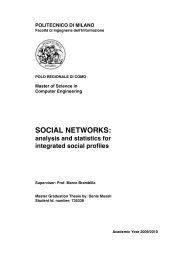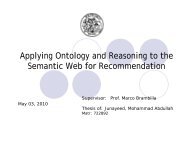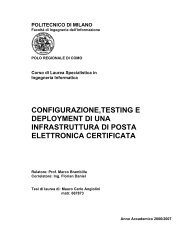Thesis full text (PDF) - Politecnico di Milano
Thesis full text (PDF) - Politecnico di Milano
Thesis full text (PDF) - Politecnico di Milano
Create successful ePaper yourself
Turn your PDF publications into a flip-book with our unique Google optimized e-Paper software.
• Structural Model: The structural model expresses the data content of the site. The content<br />
is expressed in terms of relevant entities and relationships (Figure 2.1.a). WebML is<br />
compatible with classical notations like Entity Relationship (E-R) model [16], the ODMG<br />
object-oriented model [17] and UML class <strong>di</strong>agram [18].<br />
• Hyper<strong>text</strong> Model: The hyper<strong>text</strong> model can be published in the site. Different hyper<strong>text</strong><br />
defines <strong>di</strong>fferent site view (Figure 2.1.b). The site view consist two sub models:<br />
o Composition Model: It specifies which page composes the hyper<strong>text</strong> and which<br />
content units make up a page. There are six <strong>di</strong>fferent types of units available to<br />
build up a page. The units are following: data, multi-data, index, filter, scroller<br />
and <strong>di</strong>rect units. Composition units are defined on the top of the structure schema<br />
of the site. The developer/designer in<strong>di</strong>cates the underlying entity or relationship<br />
on which the content of each unit is based. For example in figure 2.1.b, the “Book<br />
Data”, “Author Data” data unit are showing the information of a book, refer the<br />
“Book” and “Author” entity is specified in the schema of figure 2.1.a.<br />
o Navigation Model: Navigation model describes how the pages and the content of<br />
the units are connected or linked to form the hyper<strong>text</strong>. There are two kinds of<br />
links – non-con<strong>text</strong>ual and con<strong>text</strong>ual. Non-con<strong>text</strong>ual links are used when they<br />
connect semantically independent pages. For example, the page of a book to the<br />
home page of the site. On the other hand, the con<strong>text</strong>ual links are used when the<br />
content of the destination unit of the link depends on the content unit of the source<br />
unit. For instance, the page showing a book’s data in linked by a con<strong>text</strong>ual link<br />
of the page showing the index of e<strong>di</strong>tion of books of that book. Con<strong>text</strong>ual links<br />
are based on the structure schema because they connect content units whose<br />
underlying entities are associated by the relationships in the schema.<br />
• Presentation Model: Presentation model expresses the layout of the pages and graphic<br />
content of each page. Presentation specifications are either page-specific or generic.<br />
• Personalization Model: Users and user groups are explicitly modeled in the structure<br />
schema in the form of predefined entities namely – User and Group. The features of these<br />
entities can be used for storing group-based or in<strong>di</strong>vidual content like shopping<br />
suggestion, list of favorites etc. This personalized information can be used both in the<br />
composition of units or in the definition of presentation specifications. On the other hand,<br />
14


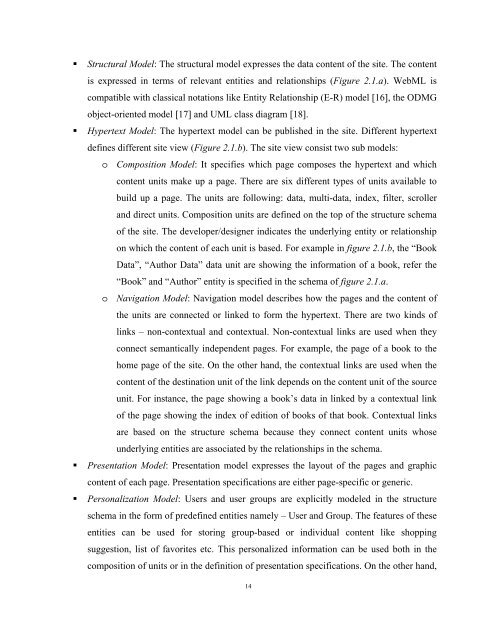
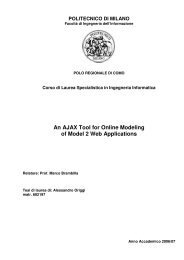
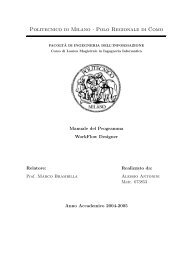
![Full text preview of the chapter [PDF] - Politecnico di Milano](https://img.yumpu.com/44021924/1/180x260/full-text-preview-of-the-chapter-pdf-politecnico-di-milano.jpg?quality=85)
